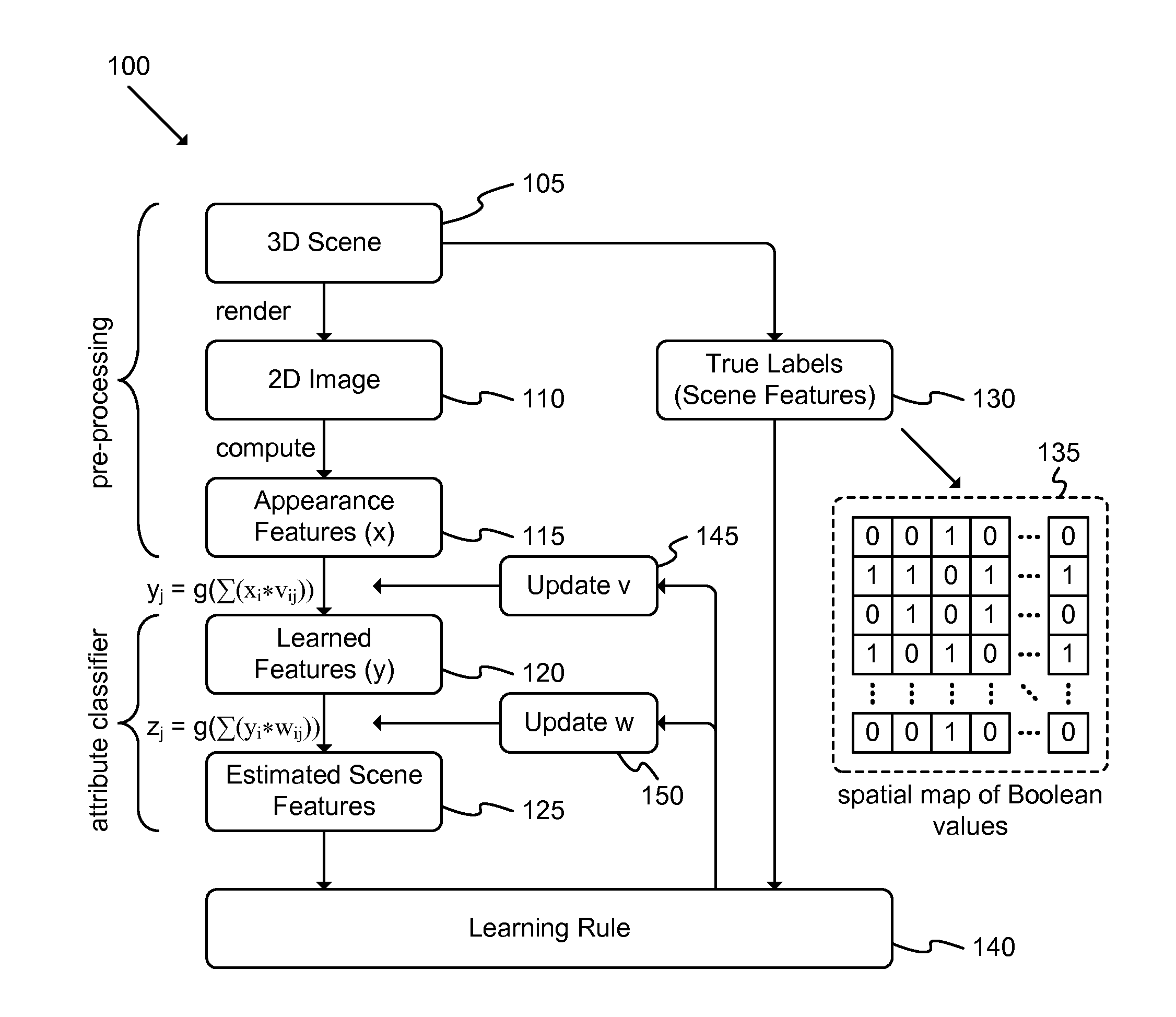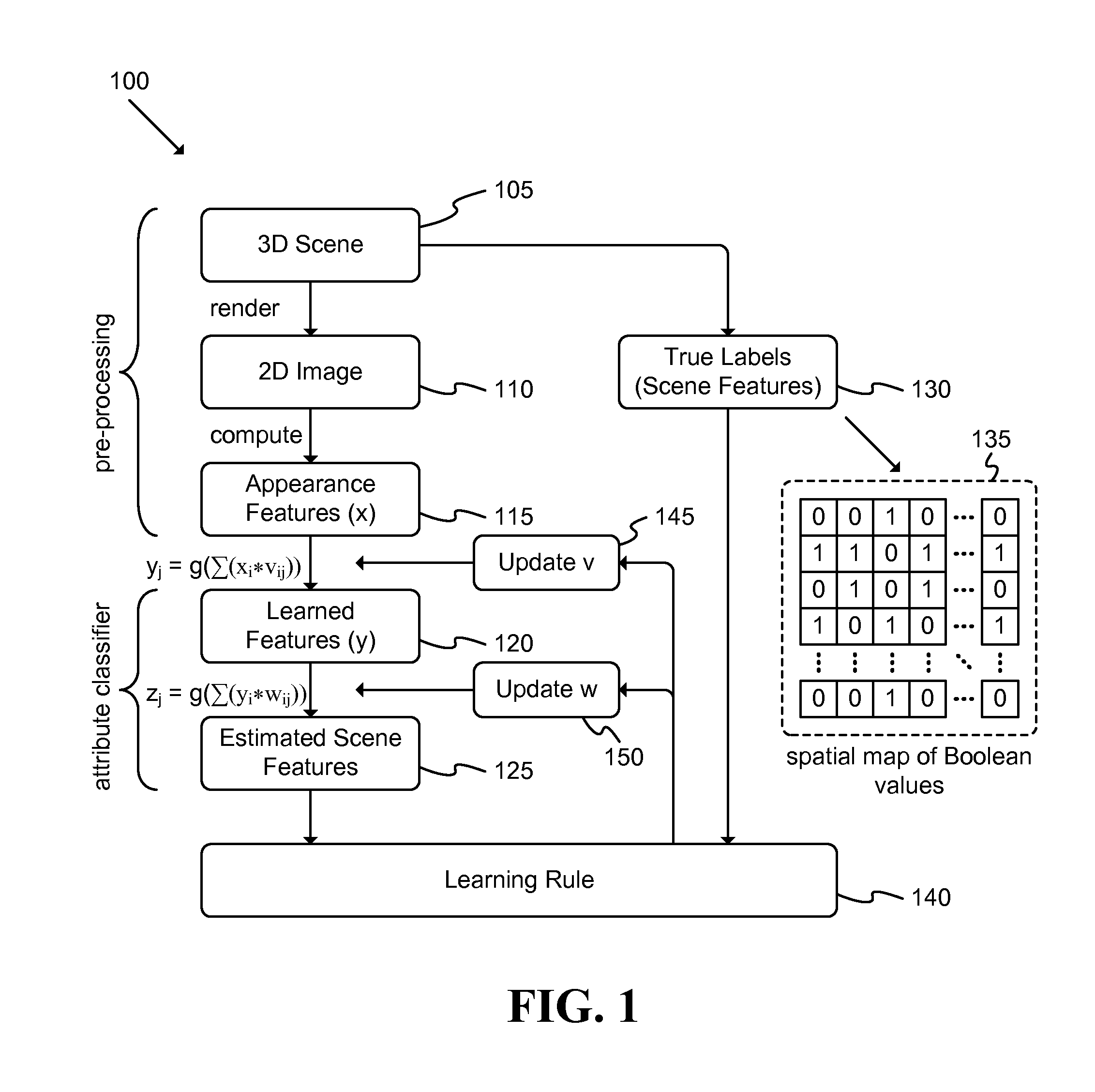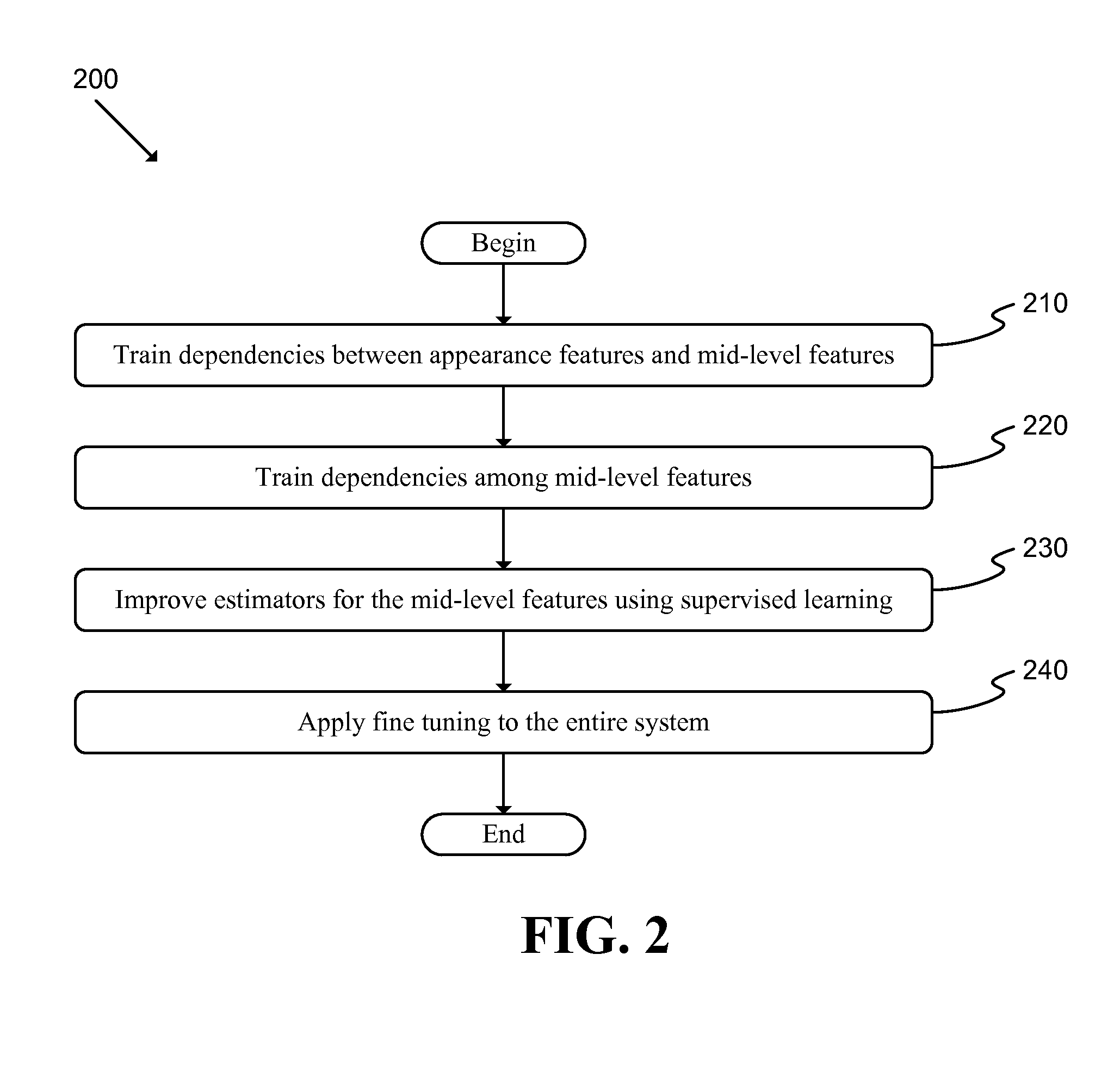Evaluation of Three-Dimensional Scenes Using Two-Dimensional Representations
- Summary
- Abstract
- Description
- Claims
- Application Information
AI Technical Summary
Benefits of technology
Problems solved by technology
Method used
Image
Examples
Embodiment Construction
[0037]In the following detailed description of the invention, numerous details, examples, and embodiments of the invention are set forth and described. However, it will be clear and apparent to one skilled in the art that the invention is not limited to the embodiments set forth and that the invention may be practiced without some of the specific details and examples discussed.
[0038]Several more detailed embodiments of the invention are described in the sections below. Section I provides a conceptual overview of the scheme implemented by some embodiments. Section II then describes conceptual systems used by some embodiments to evaluate image data. Next, Section III describes various methods of operations provided by some embodiments and provides various example implementations. Section IV then describes cost-based feature analysis used by some embodiments. Lastly, Section V describes a computer system which implements some of the embodiments of the invention.
I. Overview
[0039]Sub-sec...
PUM
 Login to View More
Login to View More Abstract
Description
Claims
Application Information
 Login to View More
Login to View More - R&D
- Intellectual Property
- Life Sciences
- Materials
- Tech Scout
- Unparalleled Data Quality
- Higher Quality Content
- 60% Fewer Hallucinations
Browse by: Latest US Patents, China's latest patents, Technical Efficacy Thesaurus, Application Domain, Technology Topic, Popular Technical Reports.
© 2025 PatSnap. All rights reserved.Legal|Privacy policy|Modern Slavery Act Transparency Statement|Sitemap|About US| Contact US: help@patsnap.com



